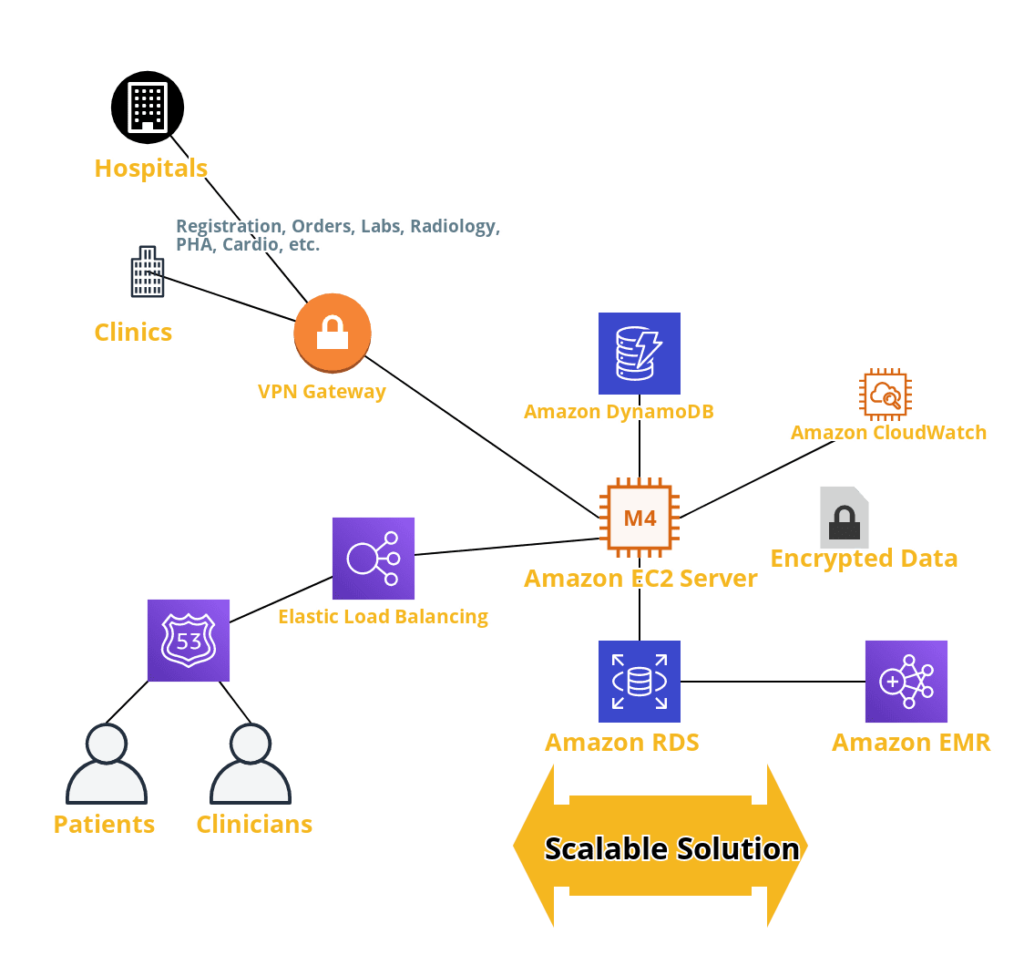
Providing continuity of care is a top priority for every healthcare organization. This includes the ability to access critical information during planned or unplanned downtime as a result of any number of possible reasons like infrastructure failures or malware attacks. Most health organizations have a suite of health information interfaces that provide all necessary patient information that can be utilized to provide a level of care needed, even during system downtimes.
For disaster recovery and system downtime solution, it is ideal to have a solution that is not relying on existing organization infrastructure. For example, a downtime solution will be of no help if it is also compromised along with all the other hospital systems because of a ransomware attack. To reduce risk, we recommend developing the solution in one of the highly trusted, standards and HIPAA compliant cloud infrastructure. In this example case, we are using Amazon Web Services, but the solution can also be implemented with Google Cloud or Microsoft Azure. AWS HIPAA Compliance whitepaper provides information necessary for processing and storing patient health information (PHI) that every health organization should read to get a good understanding of AWS HIPAA compliance.
Mirth Connect Overview
Using open source technologies on AWS, health organizations can build a system that transforms, stores, and processes HL7 and other data feeds. The solution can scale to meet the ever-increasing demands of modern medicine including the option for mobile apps to connect securely via AWS Health API. Open-source engine supported by NextGen that ingests and processes this data is called Mirth Connect. Mirth Connect is an open-source, cross-platform, bidirectional, healthcare integration engine. Running Mirth Connect on AWS provides the necessary scalability and elasticity to meet the current and future needs of healthcare organizations.
AWS Overview
To meet the needs of scalability and elasticity with the Mirth Connect application, in this example we used Amazon EC2 instances with Amazon EBS storage. This allows organizations to take advantage of AWS features such as Auto Scaling for instances. EBS allows you to deploy encrypted volumes, readily provision multiple block devices with varying sizes and throughput, and create snapshots for backups. Mirth Connect also requires a database backend that must be secure, highly available, and scalable. To meet these needs with a HIPAA-eligible AWS service, use Amazon RDS with MySQL. For easy access to critical patient data during downtime, implement JSON to facilitate easier document query and retrieval. With the core functionality of Mirth Connect as well as other open-source software offerings, you can convert each message type to JSON. The storage and retrieval of these converted messages require the use of a database. With the ever-updating standards and increases in data volume and complexity, it can be advantageous to use an easily scalable database engine. In this case, we used Amazon DynamoDB. DynamoDB is a fully managed, fast, and flexible NoSQL database service providing scalable and reliable low latency data access. For monitoring of the infrastructure and facilitate automation, we used Amazon CloudWatch. CloudWatch uses Mirth Connect metrics to enable AWS alerts and actions that ensure optimal system availability, efficiency, and responsiveness.
Conclusion
Health organizations should design solutions to account for planned and unplanned system downtimes. Organizations can take advantage of existing health information interfaces along with reliable and trusted partners like AWS and Mirth Connect to create a solution that provides continuity of care even during system downtimes.